Notice: Undefined variable: echo in /var/www/kabazoo/data/www/spark.crisp-studio.com/wp-content/themes/SparkSales_Final/header.php on line 140
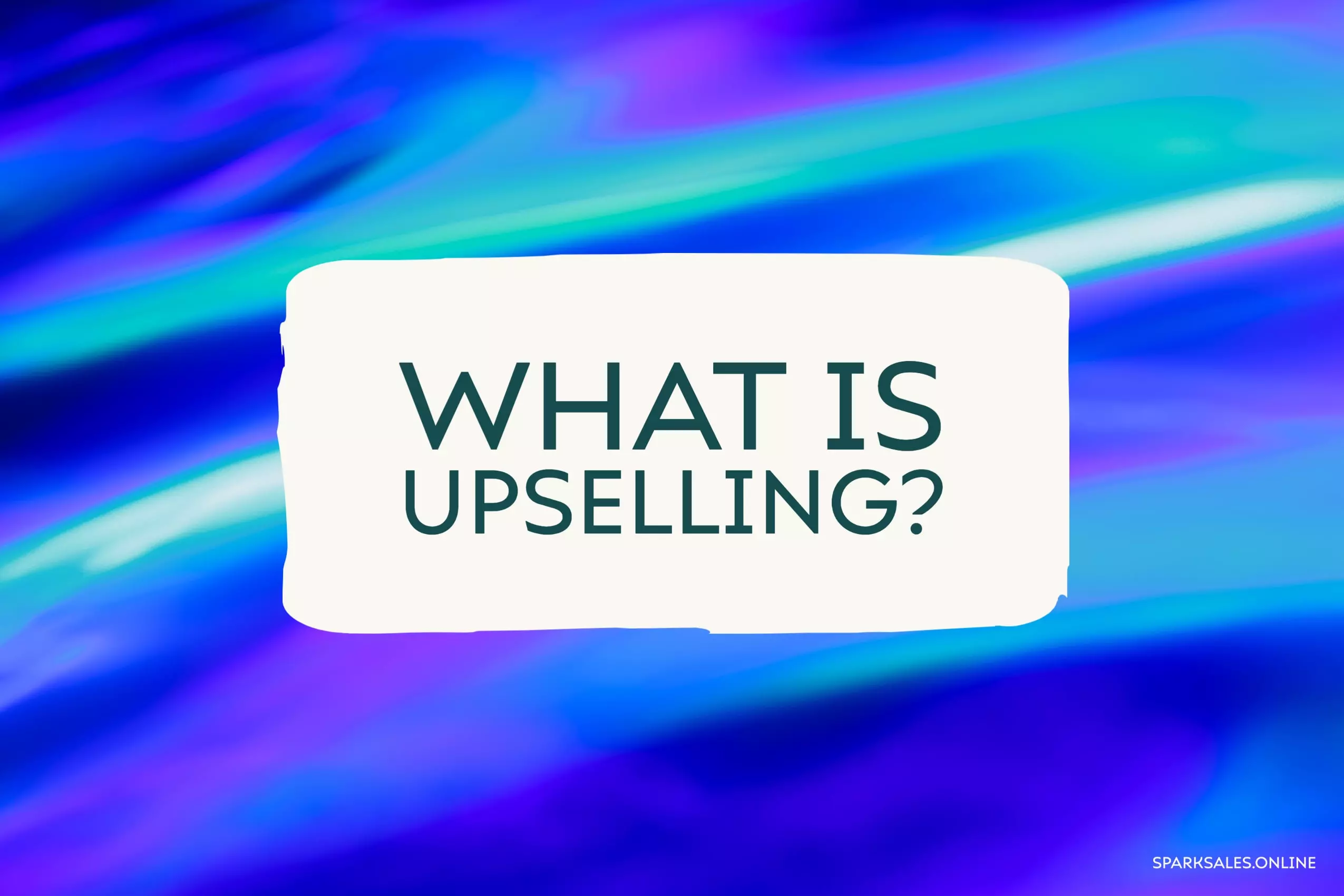
Today we’re going to talk about something called upselling. You may already be familiar with the term, but I can guarantee that even if you are not, you’ve definitely had a business try and upsell to you before.
Yes, upselling can be a touchy subject because there’s a fine line between sleazy and professional. Indeed, the best salesperson doesn’t have a salesperson vibe. In the same way that the best ecommerce websites don’t have a hard sell vibe either. The best ones make it look like they are being helpful and looking out for what’s best for the customer.
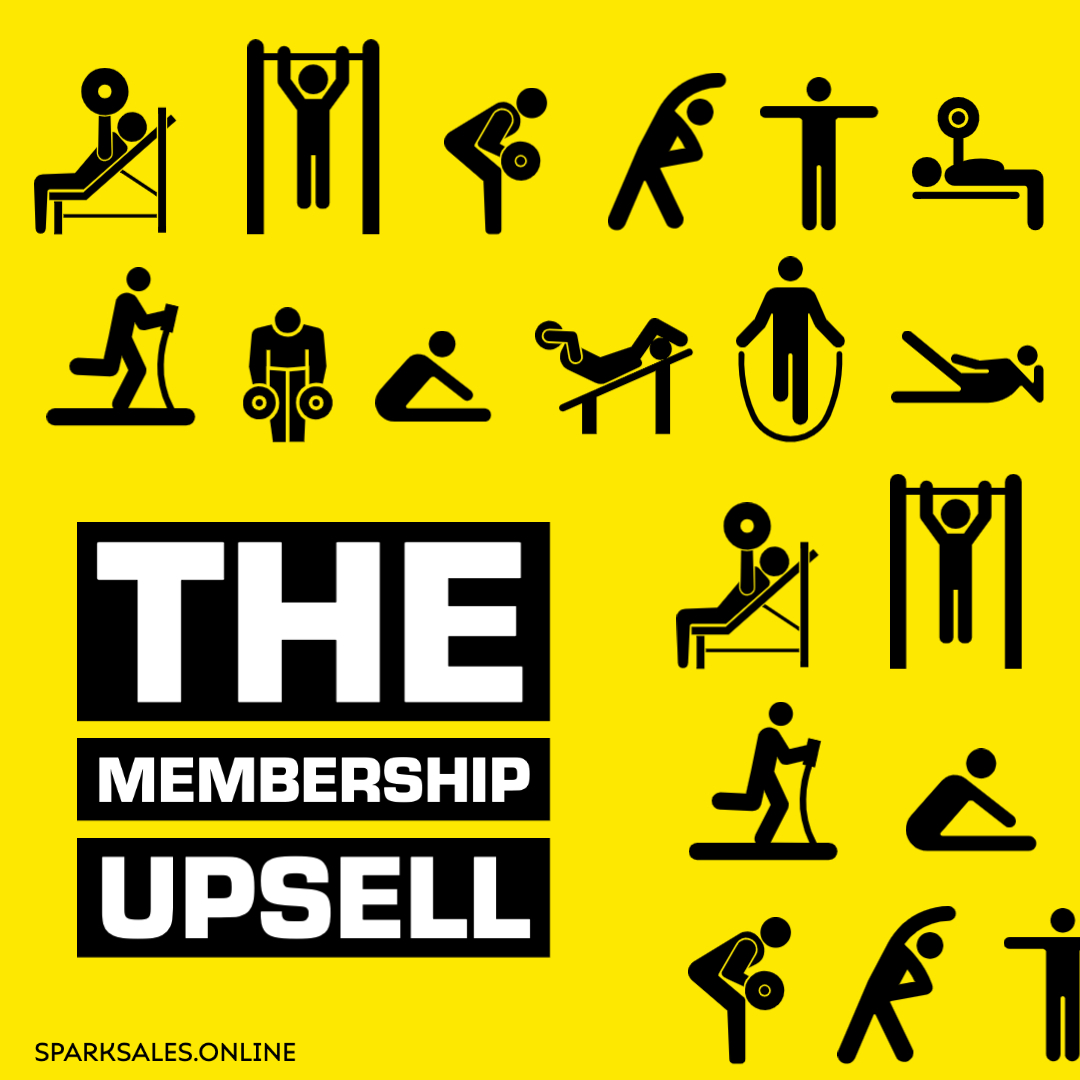
So, I’m going to give you a real-life example involving gym memberships. I had a gym membership, and I worked out at this gym for many years, it was a great place and was pretty cheap at around £15 a month. It was great value for me as I went there probably four or five times a week.
Then overnight they said, “Oh, your membership is going to be £39.99 starting next month if you want to renew your membership.” Now, luckily, mine was about to expire. So they upped the price to £39.99 a month, and I thought okay I’m just going to stay away from that gym, I’ll look around at some other ones. Now that gym was open 6:00 a.m. – 10 p.m. every day, so the hours were okay, but I started looking around at some other local gyms, and I found one that was open 24 hours. I went inside and spoke to the person at the front desk, asked to join their gym, filled out the form, and they told me that they’d have someone with me in a little while.
Now, they don’t tell you that that person will be a salesperson; they just say someone will be with you in a little while. Bear in mind, I’m just after a normal membership, right? So, I fill out the form, and the salesperson asks if I want to go ahead and buy the membership today, I confirm that I do, fill out my bank details, and it’s all done.
Okay so now what does a good company do after a customer buys an entry-level product? What does the salesperson do after I buy a membership? If you’ve ever bought a gym membership then you probably already know the answer. The salesperson says, keep in mind that they don’t ask me, they tell me “I’m going to hook you up with one free session with a personal trainer”. So I knew right away what they were doing, I knew when I walked in what they were going to do. This, my friend, is called an upsell.
Sure, they’re giving you one free session, but then Zac the personal trainer is a salesperson too. So he’ll do the free personal training session and his job for the hour is to make sure you sign up with him so that he can get paid £200 a month for being your personal trainer, that’s called the upsell, that’s how the gym makes money on top of memberships.
Suddenly, you go from a £25 a month gym membership to £225 a month. The gym ultimately makes a lot more money if they sell you on the personal training program than they do with their entry-level product. This is what good companies do, once you buy their first product, right away they offer you the next level product to see if you’re interested. That’s the best time to upsell, right after a buyer has already made the first purchase.
The upsell is often how car salespeople make their money. Car dealerships will, for example, advertise a car for £15,000, and then, you’ve been through this before, right? The “Oh, you know, the air conditioning is £400 and the tinted back windows are an extra £200.” So they just keep trying to sell you more once you’ve already committed to buying the car or once you’ve shown a lot of interest, they keep trying to upsell.
Have you ever had a dealership recall your car? You know cars get recalled for minor and major issues all the time. Let’s say your car gets a recall, maybe it needs to get a part replaced or something, and they’re doing the replacement for free. One thing they may try to do is they’ll call you up on the phone, or they’ll just talk to you right there and say “Hey, your car needs transmission fluid, it also needs a new exterior light and two fuses replacing. You know, there are three things, and it’s going to be about £500 in total. Would you want us to go ahead and do that for you today?” And they’ll be like “This is super necessary for your car. This needs to get this done soon.”
That’s their upsell. They pretty much think whenever a car gets recalled, that’s their opportunity to sell to the customer. Meanwhile, if you take your car to a normal mechanic, nine out of ten times you’re not going to need any of the stuff they mention. I mean I know that they’re trying to make a living and sometimes your car needs it, but a lot of the time these things are way more expensive to get done at the dealership anyway, and a lot of the time they’re not necessary at all.
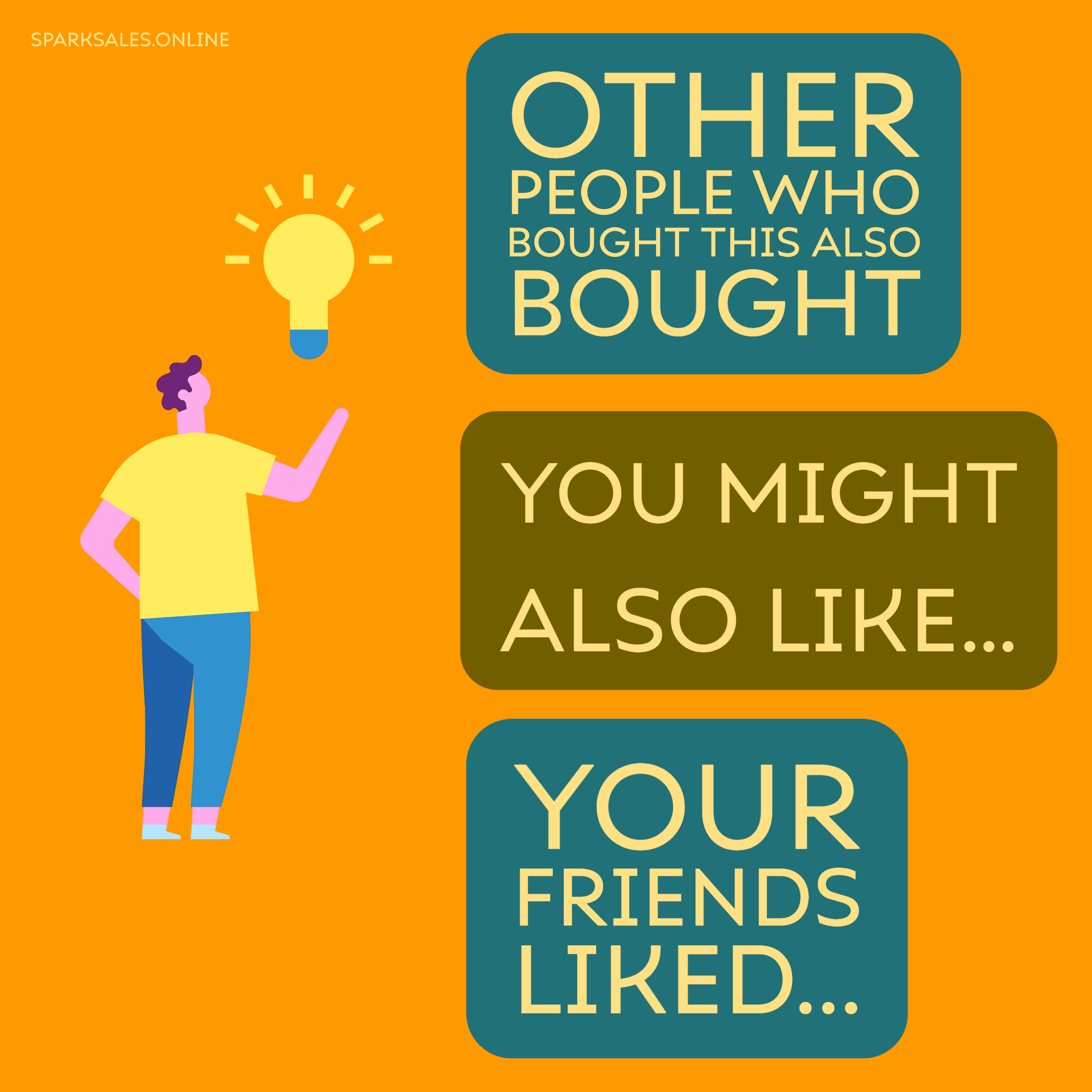
So that’s called an upsell, it’s whenever you’re going in for a product, and then they try to sell you more. When you take your car in for a quick fix, and it goes from free to £500. Now, this often happens online too. I mean when you buy something online, what does Amazon do? What does eBay do? “Hey, if you bought this you might also like this!” It’s vital to any business. This is how a lot of companies actually make their money. It’s not from the £30 entry-level product; it’s the £100 product they sell you afterwards, that’s how they make money.
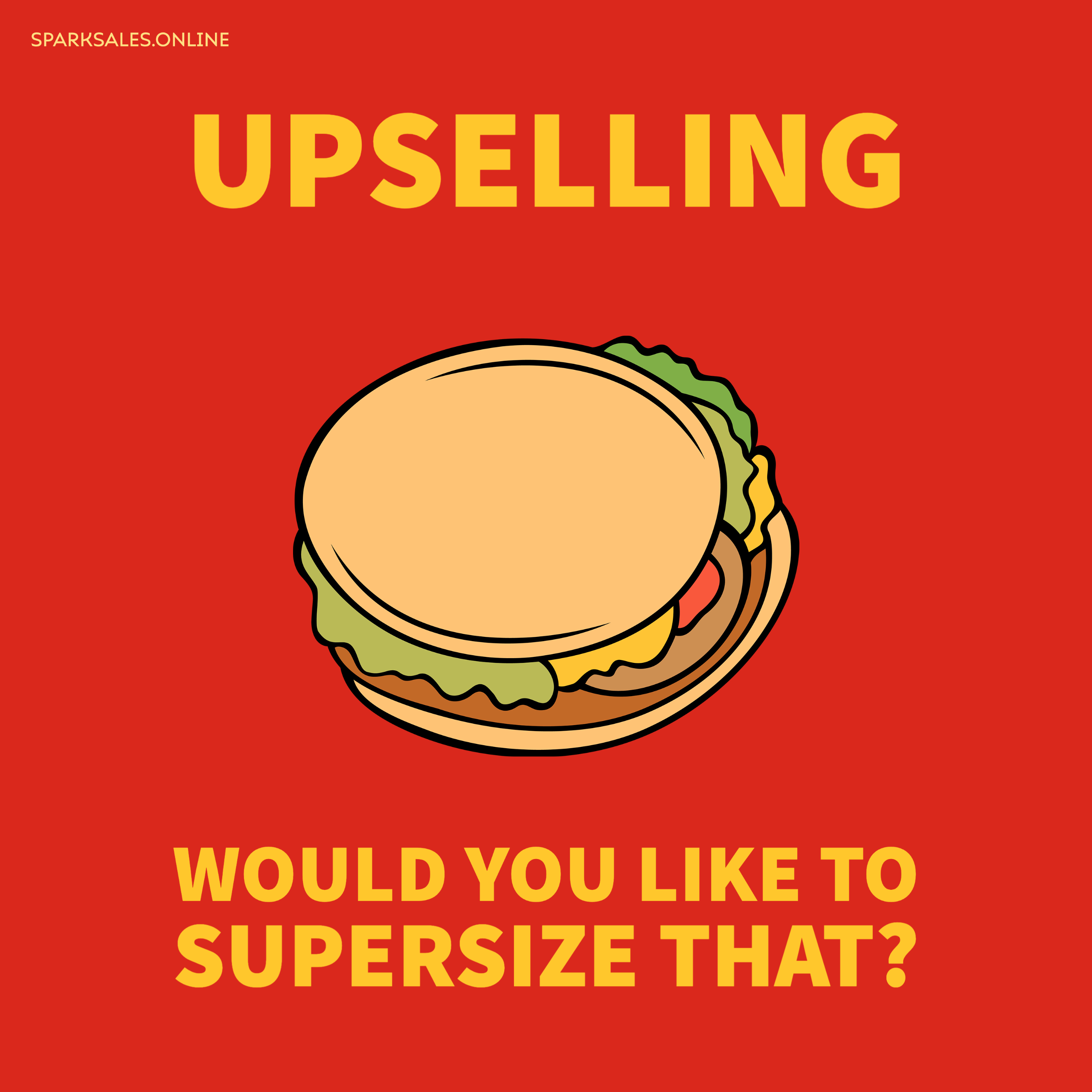
All right so you’ve got upselling, and you’ve also got cross-selling, and both of these can make your average order value (which is also referred to as AOV) go way up. There are huge benefits to this, and obviously, there’s a lot of different ways to implement these processes, but having at least one of these in place is really imperative to your business when it comes to sales.
These two concepts get muddled up very often online. Upselling is when you’re trying to get a buyer to upgrade, increase their spend, or choose a more expensive item than what they were originally going with. Like “Would you like to supersize that?”
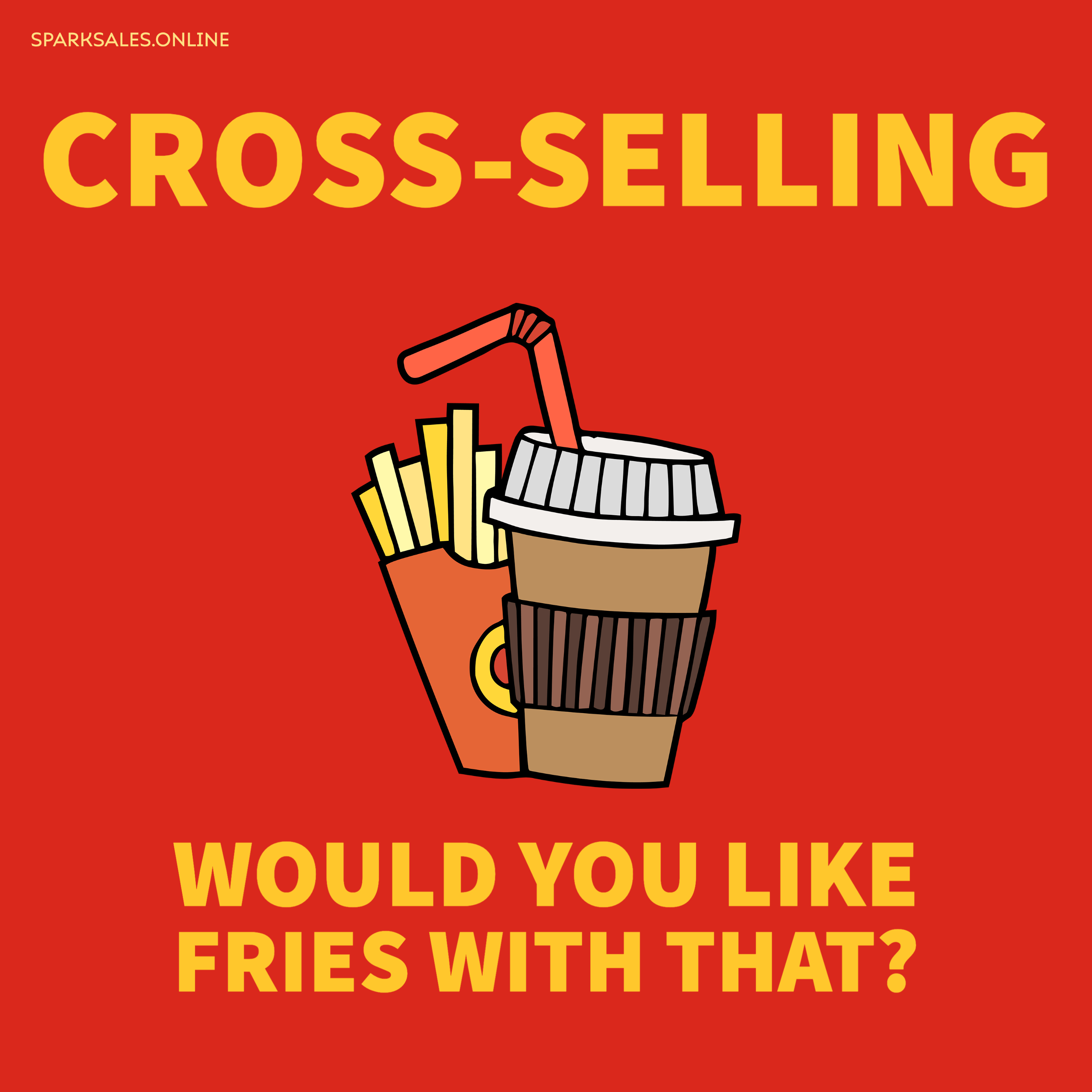
Cross-Selling is what McDonald’s does when they ask you if you’d like fries with that. Cross-Selling is a website saying “You bought this, how about these matching items to go with it?”
You’ve seen this in supermarkets with all of the sweets and chocolate bars at the checkout. You’re at the checkout waiting to pay, but wait a minute, what are all these extra little goodies? So let’s say a customer goes there for a £10 item, and then they spend £5 more on snacks. That store has now increased its order value by 50%, so that’s pretty awesome. Upselling and cross-selling on online marketplaces is essentially the same thing.
There are many different ways you can do this, a good example of it is promotions like buy one get one free or buy one get half off. Many places will offer a bulk discount, so that the price is slashed in half if you buy two.
A scenario of when you’re likely to see a cross-sell is if you have a customer who has set out to purchase something. Let’s say they’re going into your store and they see washing up liquid on the shelf, so they’re going to buy this washing up liquid. They see it, they like it, and they pick it up. But then they see right next to it on the shelf underneath there’s a new dishwashing sponge designed for boosting the effectiveness of that very washing up liquid. So they go hand in hand, you know, one is made for the other.
The same thing works in all manner of businesses. Let’s say you have an online fashion store, a lot of times what’s effective for your customer is to implement a kind of product bundle in terms of an outfit.
So you might have a t-shirt, some jeans and some trainers. You can get the trainers for £20, you can get the jeans for £15, and you can get the t-shirt for £5. Let’s say that they’d usually be £40 if bought separately. However, altogether you’re going to offer them a slight discount of 10%. So let’s say you can get all these together for 10% off these recommended products.
So this is a good use of cross-selling techniques. Now the customer is getting a great outfit that they think goes well together for £36 instead of £40. In this scenario, everybody wins. The customer is happy because they feel like they’re getting more for their money. They like the look of the outfit or whatever other products go with it, and they’re getting a good deal on it. This is a great example of effective cross-selling because you’re recommending products related to the items that originally grabbed your buyers interest.
One app that’s pretty popular on the Shopify app store is called Frequently Bought Together. With this app, you can do manual bundles, so it’s great to look into if you run an online fashion store. I like how you can attach an automated deduction to collections of items so that you can use the app as a discounted upselling widget. You can apply the following discount models:
This extension is relatively easy to configure for your store. It’s very intuitive because it records previous purchases and suggests products with multiple options. It’s beneficial because it improves the buying experience for the purchaser whilst also increasing sales.
This is a really excellent plugin. It’s a great one to have in your toolbox if you have a WordPress ecommerce store. One of the best features of this one is the countdown timer you can apply to a limited offer. This way, your visitor must check out before the timer ends to get the reward/discount.
Another app I’m going to mention is UFE Cross-Sell & Upsell Funnel. This app is perfect for cross-selling and upselling. So if you’re looking for something that has a lot of features, then this one looks great, and it’s free just to try it out and see how it works with your store.
If you take some time to go through the relevant app store for your site and see which one would work for you best, there are many options out there, with most of them being free to try out. The best bit about there being lots of choices is that it also drives competition between developers to improve their product constantly.
Why should you do it? I mean, you know that it’s going to get your average order value up higher, but really what’s the end goal? One of the biggest advantages people see from using upsell and cross-sell techniques is improving their ad performance. So not only are you seeing your average order value increase, but you see your Return On Ad Spend (ROAS) increase as well and respectively.
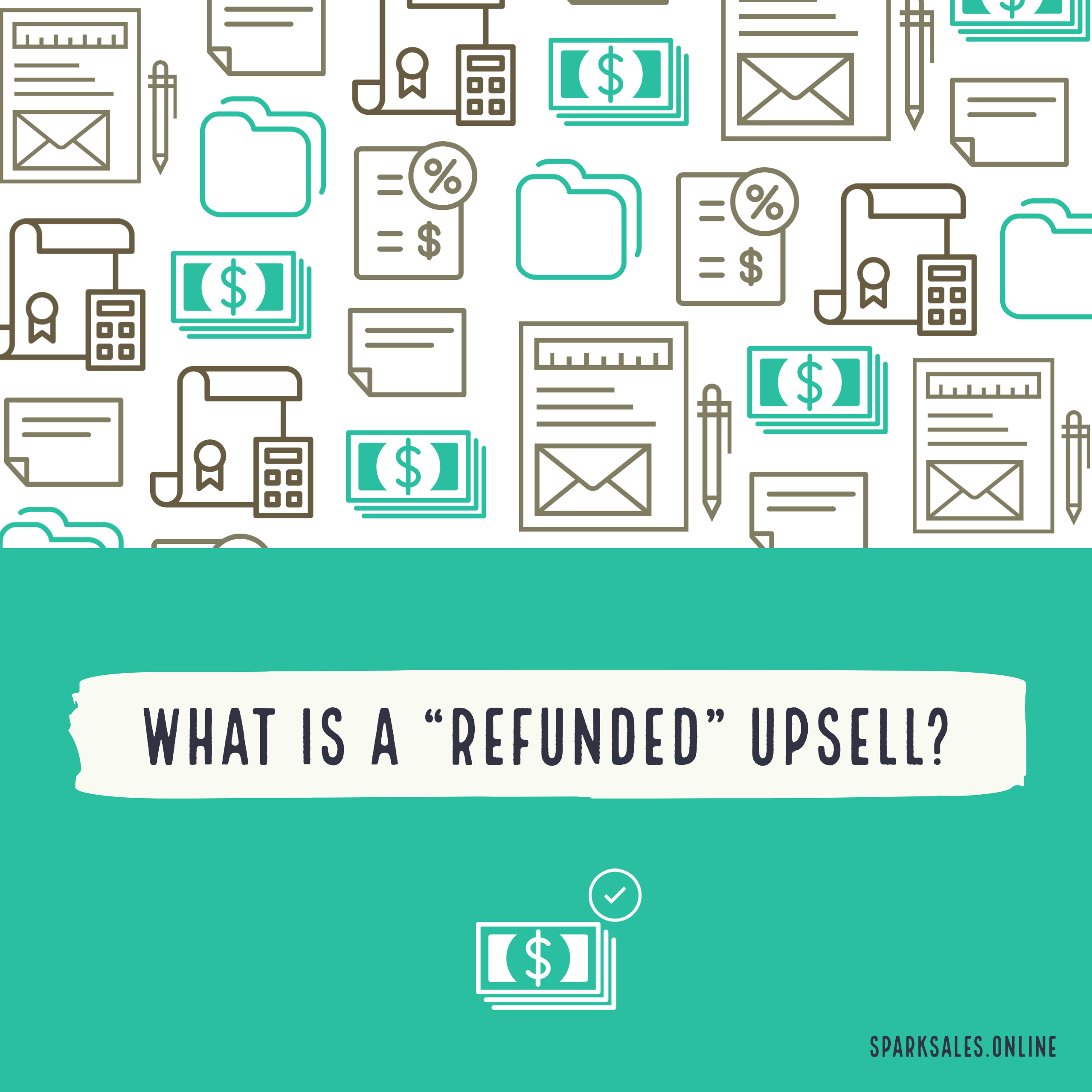
The refunded upsell effect occurs when a buyer makes a purchase that can then be upsold using the money they’ve already spent, put towards the larger price.
It works firstly because we’re more likely to buy something of lower value, to begin with, and with the purchase made we’re then presented with an opportunity to spend more. Still, as we’ve already spent on our initial purchase, we view the larger price as much cheaper by comparison.
For example, let’s say I buy a ticket to go and see a football match for £50, and I’m offered to upgrade that to a season ticket which is usually £200, but because of this special promotion, I can purchase it for only £150. Having already spent the original £50, then the jump to the higher season ticket price is perceived to be much lower, and it makes me feel like my trip to the football match was somehow free, they gave me the money I spent back, to put towards the higher-priced season ticket. Thus I feel like it’s been refunded.
The net result is I spent £200 with them, but I feel great as in reality the season ticket should have been £200 on its own, but I got it for only £150 as my perception of price has been distorted.
Depending on what you sell, you could promote a smaller and lower-priced version of your offering to make the sale, and then this would allow you to upsell those clients to a larger spend once they’ve experienced your offering.
The refunded upsell is all about offering to upsell a buyer who’s made a smaller purchase by refunding or upgrading what they’ve already paid to make the larger purchase seem better value as their existing payment was not wasted.
Post-purchase upselling is actually post-purchase cross-selling, but it’s better known as post-purchase upselling, so we’ll be referring to it as that. Post-purchase upselling is used at the point when your customer is in the process of checking out or has just checked out. Before they leave your website, you suggest items to complement their initial purchase.
An example of online stores taking huge advantage of these techniques is online supermarkets. When you shop with an online supermarket regularly, they have software that builds up a behaviour pattern for you as the buyer. So, let’s say it knows that you buy a bottle of ketchup once every 3 weeks. When you go to checkout, and you don’t have ketchup in your basket, a message will appear before the confirmation screen saying “Here are some items you may have forgotten…” and on that list will be ketchup and other items they’re cross-selling to you.
Another example of online supermarkets mastering the art of cross-selling is that practically every single one of them has a special offers screen just before the payment page. This shows you their best discounts for that week. They make it very easy to add their promotions: like buy one get one free or buy one get half off, instantly to your basket just before you’re about to leave the site. Every step of the way you’re directed to spend more and more money because once you’ve left the site, that’s it. It’s imperative that their focus is on AOV and that they hit their targets, and this is how the big brands do it.
Here’s a straightforward example of a way to increase your average order value using post-purchase upselling:
Even though the profit margin gets smaller and smaller each time, you’re still making a profit, and it’s not increasing your advertising spend whatsoever as you’ve already paid to acquire that initial sale.
These extra post-purchase upsells are bonuses, so no matter how slim the profit margin gets, even if the profit margin is as low as £5, that’s extra profit that you ultimately received for free and for minimal effort.
This works similarly to email marketing, where you continuously advertise to your email list again and again. It’s free orders that you’ve already paid to obtain in the first place, post-purchase is just free extra profit when leveraged appropriately.
CartHook isn’t free, but it does have a 14-day free trial. It’s useful for post-purchase upselling because it assists in increasing average order values by facilitating you to make after purchase discounts to your shoppers. Visitors can accept your offers with one-click in the middle of your Purchase and Confirmation page without them needing to input their data again.
This is a WordPress plugin that helps store owners display offers and discounts on their checkout page. It’s a powerful plugin when it comes to AOV because offers get automatically added to a buyer’s current order in just one click.
This Magento extension is ideal as a low-risk test to see if post-purchase upselling will work for your store. Because Post Purchase Upsell By MageSide offers the upsell AFTER the purchase transaction is completed, you don’t have to worry about losing the sale. This extension allows the purchaser to buy extra items without re-entering their data. There are two options for fees: £150 for fixed-price or £33 + 1% of upsell revenue for a monthly subscription.
Subscribe to our posts
This page requires cookies to give you the best possible experience. Read our Cookies Policy to learn more.
This page requires cookies to give you the best possible experience. Read our Cookies Policy to learn more.
Comments